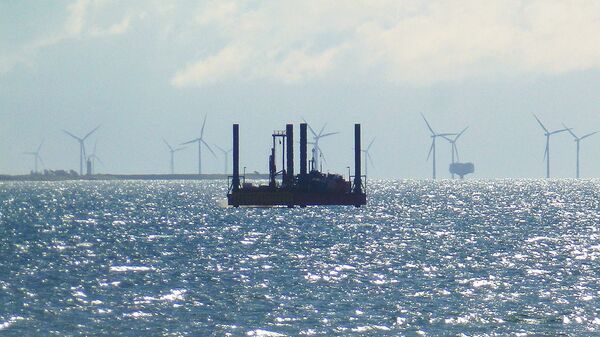A top German court has green-lit the construction of the world’s longest combined rail and road tunnel through the Baltic Sea, that is expected to drastically reduce journey times from northern Germany to the key islands of Denmark and provide the agglomerations of Hamburg and Copenhagen with a direct link, the Danish newspaper Berlingske reported.
Danish Transport Minister Benny Engelbrecht hailed the decision as a “big day not only for Danish-German relations, but also for Europe and for creating green transport corridors,” stressing that the last roadblock has been removed.
God dag for dansk-tyske relationer og EUs grønne mål om at flytte gods fra vej til bane. God dag for Femern Bælt-forbindelsen. Med klar tilkendegivelse fra den tyske domstol er den sidste hindring for arbejde på den tyske side ryddet af vejen#dktrm #dkpolhttps://t.co/uUSOMFSaZF
— Benny Engelbrecht (@BennyEngelbrech) November 3, 2020
The 18-kilometre submerged Fehmarn Belt Fixed Link is due to open in 2029 and will be one of Europe’s largest infrastructure projects, crossing the Fehmarn Belt in the Baltic Sea between the ports of Puttgarden in Germany and Rødby on the Danish island of Lolland. The project was previously described as beneficial for the entire EU as it will enable the faster exchange of goods and people between Scandinavia and mainland Europe.
The cost of the four-lane, twin railway tunnel, expected to reduce road journey times to 10 minutes from an hour-long ferry ride, has been estiamted at over DKK 52 billion (over $8 billion). It will be paid for by Denmark alongside funding from the EU, which has shown a keen interest in the project. However, it has faced stern opposition and even legal battles from conservationists and ferry companies facing vastly reduced trade. Therefore the project's chief executive Claus Baunkjaer described the recent regulatory approval as a “historic milestone”. By contrast, the Danish side had green-lit the project already in 2015.
While Denmark has already commenced construction work on its side, the German side has been lagging behind, blocked by legal quagmire. Environmentalists raised concerns over its environmental impact on landscape and wildlife. While the federal administrative court in Leipzig rejected their arguments, the Luxembourg-based European Court of Justice is still considering other complaints related to the project.
Unlike other underwater tunnels, such as the Channel Tunnel under the English Channel, the Germany-Denmark tunnel will not lie under the seabed, but will use hollow concrete sections that will be submerged and placed in a trench dug into the Baltic Sea floor. At its deepest point, the highway in the Fehmarn tunnel will be just under 39 metres below sea level.
The idea of a permanent Baltic link across the Fehmarn Belt was first floated almost 30 years ago. The initial project was a bridge, like the eight-kilometre Øresund Bridge between Copenhagen and Malmö, which linked the populous provinces of Zealand in Denmark and Skåne in Sweden into one giant Øresund Region.




